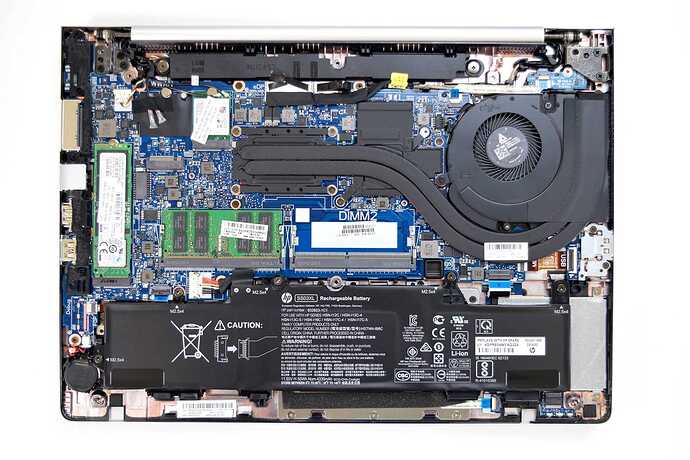Hello. I have 1TB HDD on Windows 10, and then I installed Garuda Linux as replacement OS. I chose Erase, to ensure Windows OS is wiped out, but when Garuda Linux finished installing, I only see 200+ GB of HDD space.
How can I totally eliminate Windows OS and make sure that I maximize the HDD space I have on my laptop?
Tried searching the forum but looks like this was not yet addressed in the past. I am not trying to run a dual system, I want to get rid of Windows 10. The laptop no longer boots up to Windows, goes to either Garuda Linux or USB thumb drive.
Any help will be greatly appreciated. Thank you.
Post your terminal/konsole in- and output as text (no pictures) from:
╰─λ garuda-inxi
System:
Kernel: 5.17.4-zen1-1-zen arch: x86_64 bits: 64 compiler: gcc v: 11.2.0
parameters: BOOT_IMAGE=/@/boot/vmlinuz-linux-zen
root=UUID=91c082a6-b480-48b8-943a-8d0dcbf23407 rw rootflags=subvol=@
quiet quiet splash rd.udev.log_priority=3 vt.global_cursor_default=0
loglevel=3
Desktop: KDE Plasma v: 5.24.4 tk: Qt v: 5.15.3 info: latte-dock
wm: kwin_x11 vt: 1 dm: SDDM Distro: Garuda Linux base: Arch Linux
Machine:
Type: Laptop System: HP product: HP EliteBook 840 G5 v: N/A
serial: <superuser required> Chassis: type: 10 serial: <superuser required>
Mobo: HP model: 83B2 v: KBC Version 04.6D.00 serial: <superuser required>
UEFI: HP v: Q78 Ver. 01.19.00 date: 01/13/2022
Battery:
ID-1: BAT0 charge: 24.0 Wh (60.3%) condition: 39.8/50.2 Wh (79.2%)
volts: 11.2 min: 11.6 model: Hewlett-Packard Primary type: Li-ion
serial: <filter> status: discharging cycles: 2
CPU:
Info: model: Intel Core i5-8350U bits: 64 type: MT MCP arch: Coffee Lake
family: 6 model-id: 0x8E (142) stepping: 0xA (10) microcode: 0xEC
Topology: cpus: 1x cores: 4 tpc: 2 threads: 8 smt: enabled cache:
L1: 256 KiB desc: d-4x32 KiB; i-4x32 KiB L2: 1024 KiB desc: 4x256 KiB
L3: 6 MiB desc: 1x6 MiB
Speed (MHz): avg: 2286 high: 2994 min/max: 400/3600 scaling:
driver: intel_pstate governor: performance cores: 1: 2062 2: 2085 3: 2053
4: 2198 5: 2094 6: 2994 7: 2401 8: 2401 bogomips: 30399
Flags: avx avx2 ht lm nx pae sse sse2 sse3 sse4_1 sse4_2 ssse3 vmx
Vulnerabilities:
Type: itlb_multihit status: KVM: VMX disabled
Type: l1tf
mitigation: PTE Inversion; VMX: conditional cache flushes, SMT vulnerable
Type: mds mitigation: Clear CPU buffers; SMT vulnerable
Type: meltdown mitigation: PTI
Type: spec_store_bypass
mitigation: Speculative Store Bypass disabled via prctl
Type: spectre_v1
mitigation: usercopy/swapgs barriers and __user pointer sanitization
Type: spectre_v2 mitigation: Retpolines, IBPB: conditional, IBRS_FW,
STIBP: conditional, RSB filling
Type: srbds mitigation: Microcode
Type: tsx_async_abort mitigation: TSX disabled
^[[A^[[AGraphics:
Device-1: Intel UHD Graphics 620 vendor: Hewlett-Packard driver: i915
v: kernel ports: active: eDP-1 empty: DP-1, DP-2, HDMI-A-1, HDMI-A-2
bus-ID: 00:02.0 chip-ID: 8086:5917 class-ID: 0300
Device-2: Chicony HP HD Camera type: USB driver: uvcvideo bus-ID: 1-9:4
chip-ID: 04f2:b5e7 class-ID: 0e02 serial: <filter>
Display: x11 server: X.Org v: 21.1.3 with: Xwayland v: 22.1.1
compositor: kwin_x11 driver: X: loaded: modesetting
alternate: fbdev,intel,vesa gpu: i915 display-ID: :0 screens: 1
Screen-1: 0 s-res: 1920x1080 s-dpi: 96 s-size: 508x285mm (20.00x11.22")
s-diag: 582mm (22.93")
Monitor-1: eDP-1 model: ChiMei InnoLux 0x14d4 built: 2017 res: 1920x1080
hz: 60 dpi: 158 gamma: 1.2 size: 309x173mm (12.17x6.81")
diag: 354mm (13.9") ratio: 16:9 modes: 1920x1080
OpenGL: renderer: Mesa Intel UHD Graphics 620 (KBL GT2)
v: 4.6 Mesa 22.0.2 direct render: Yes
Audio:
Device-1: Intel Sunrise Point-LP HD Audio vendor: Hewlett-Packard
driver: snd_hda_intel v: kernel alternate: snd_soc_skl bus-ID: 00:1f.3
chip-ID: 8086:9d71 class-ID: 0403
Sound Server-1: ALSA v: k5.17.4-zen1-1-zen running: yes
Sound Server-2: PulseAudio v: 15.0 running: no
Sound Server-3: PipeWire v: 0.3.50 running: yes
Network:
Device-1: Intel Ethernet I219-LM vendor: Hewlett-Packard driver: e1000e
v: kernel port: N/A bus-ID: 00:1f.6 chip-ID: 8086:15d7 class-ID: 0200
IF: enp0s31f6 state: down mac: <filter>
Device-2: Intel Wireless 8265 / 8275 driver: iwlwifi v: kernel pcie:
gen: 1 speed: 2.5 GT/s lanes: 1 bus-ID: 01:00.0 chip-ID: 8086:24fd
class-ID: 0280
IF: wlp1s0 state: up mac: <filter>
Bluetooth:
Device-1: Intel Bluetooth wireless interface type: USB driver: btusb v: 0.8
bus-ID: 1-7:2 chip-ID: 8087:0a2b class-ID: e001
Report: bt-adapter ID: hci0 rfk-id: 0 state: up address: <filter>
Drives:
Local Storage: total: 238.47 GiB used: 16.5 GiB (6.9%)
SMART Message: Unable to run smartctl. Root privileges required.
ID-1: /dev/sda maj-min: 8:0 vendor: Micron model: MTFDDAV256TBN-1AR15ABHA
size: 238.47 GiB block-size: physical: 4096 B logical: 512 B
speed: 6.0 Gb/s type: SSD serial: <filter> rev: 0T14 scheme: GPT
Partition:
ID-1: / raw-size: 238.17 GiB size: 238.17 GiB (100.00%)
used: 16.5 GiB (6.9%) fs: btrfs dev: /dev/sda2 maj-min: 8:2
ID-2: /boot/efi raw-size: 300 MiB size: 299.4 MiB (99.80%)
used: 576 KiB (0.2%) fs: vfat dev: /dev/sda1 maj-min: 8:1
ID-3: /home raw-size: 238.17 GiB size: 238.17 GiB (100.00%)
used: 16.5 GiB (6.9%) fs: btrfs dev: /dev/sda2 maj-min: 8:2
ID-4: /var/log raw-size: 238.17 GiB size: 238.17 GiB (100.00%)
used: 16.5 GiB (6.9%) fs: btrfs dev: /dev/sda2 maj-min: 8:2
ID-5: /var/tmp raw-size: 238.17 GiB size: 238.17 GiB (100.00%)
used: 16.5 GiB (6.9%) fs: btrfs dev: /dev/sda2 maj-min: 8:2
Swap:
Kernel: swappiness: 133 (default 60) cache-pressure: 100 (default)
ID-1: swap-1 type: zram size: 31.2 GiB used: 2.8 MiB (0.0%) priority: 100
dev: /dev/zram0
Sensors:
System Temperatures: cpu: 50.0 C pch: 47.5 C mobo: 30.0 C
Fan Speeds (RPM): N/A
Info:
Processes: 260 Uptime: 9m wakeups: 3 Memory: 31.2 GiB used: 2.91 GiB (9.3%)
Init: systemd v: 250 tool: systemctl Compilers: gcc: 11.2.0 Packages:
pacman: 1857 lib: 543 Shell: fish v: 3.4.1 default: Bash v: 5.1.16
running-in: konsole inxi: 3.3.15
Garuda (2.6.2-1):
System install date: 2022-04-28
Last full system update: 2022-04-29
Is partially upgraded: No
Relevant software: NetworkManager
Windows dual boot: No/Undetected
Snapshots: Snapper
Failed units:
Without it, you will not receive any help from the Garuda team or your topic is likely to be closed without notice.
Before you open a new help request, read relevant sections of the Arch and Garuda wiki.
Thoroughly search your issue and any error messages in the forum and on the web.
Report everything you have already attempted to solve your problem.
